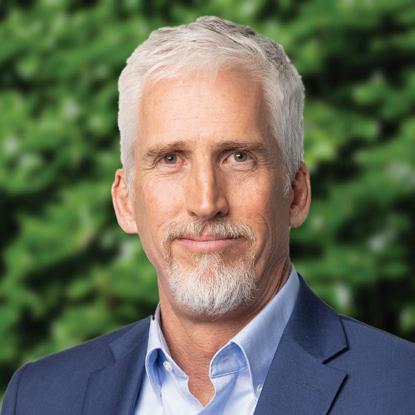
4 minute read
A living legacy
From R. Max Holmes, President & CEO
On June 18 of this year, we lost a climate science pioneer and visionary—our founder, Dr. George Woodwell. Just over a month later, dozens of friends and colleagues gathered here at the Center with George’s family to remember and celebrate his incredible professional and personal legacy. In the pages that follow, you can read excerpts from comments made that day by Woodwell Climate staff, including my reflections on George’s incredible mentorship. Here, I want to share a bit more about just how much George’s work continues to infuse and influence everything we do, as it is a truly remarkable testament to his scientific insight.
The thread that ran through all of George’s own research was forests. He tackled the biggest environmental issues of the late twentieth century, including nuclear radiation to DDT, in each case asking “how does this affect forests?” And he was never content to simply increase our understanding of a problem; he insisted on taking that new knowledge into the public sphere to inform better decision-making.
By the early 1980s, he had turned his attention to the so-called ‘carbon dioxide problem,’ and he enlisted a brilliant young scientist, Dr. Richard (Skee) Houghton to figure out just how much carbon dioxide forests around the globe were absorbing. Today, Woodwell Climate scientists continue to be leaders in quantifying and monitoring how much carbon is held in the world’s forests, as well as other land-based ecosystems, and in understanding forests’ multidimensional role in our climate system—yes, carbon storage, and also water cycling and physical cooling mechanisms.
George was early to recognize the importance of forests as climate solutions, and the need for pragmatic mechanisms to protect them. In 1999, he was instrumental in a World Commission on Forests and Sustainable Development report that coined the phrase Forest Capital Index, suggesting a quantitative measure of forests’ ecological value, translated into dollar terms. Today, Woodwell Climate scientists are developing a Landscape Capital Index that will provide a quantitative assessment of carbon, water, biodiversity, climate resilience, and more, of landscapes on a global scale, so that land stewards can be fairly compensated for the nature-based climate solutions they provide.
While George’s own work focused on forests, his thinking about the role of the natural world in our climate system was broad. In 1986, when George testified in the first major congressional hearing on climate change, he not only extolled the value of forests but also cautioned that warming and thawing of the Arctic could result in the release of greenhouse gasses that would worsen climate change. “The warming begets warming,” he would say. Today, one of our largest projects, Permafrost Pathways, focuses on exactly this issue and is bringing together scientists, Indigenous communities, and policymakers at all levels to address this critical risk.
Our climate risk work with communities and governments around the world is one of the Center’s newest areas of work and the ties back to George are less obvious. But George was passionate about the idea that science could, and should, play a critical role in addressing the world’s greatest social ills, including poverty, hunger, disease, and inequality. Climate change is, as they say, a threat multiplier for all of these. And our Just Access project is rooted in the philosophy that all communities need and deserve the best climate risk information to enable them to build the most resilient, sustainable future possible. With each passing year, increasingly extreme weather events and the disproportionate toll they take on marginalized communities and populations make this work increasingly imperative—and I think it would make George proud.
These sorts of throughlines can be found in nearly all of our projects, which is a remarkable testament to the breadth and depth of George’s scientific leadership. Indeed, George’s vision for innovation and sustainability is infused in the very walls of our campus, which he helped design for energy efficiency, connection to nature and each other, and not least, beauty.
But perhaps George’s most important legacy was his determination—an amazing ability to stay outraged and yet optimistic, and to never stop fighting for what was right. That attitude influenced more than one career (including my own) during George’s lifetime, and the effect continues to ripple. Those qualities have never been more needed.
Onward,
Max










